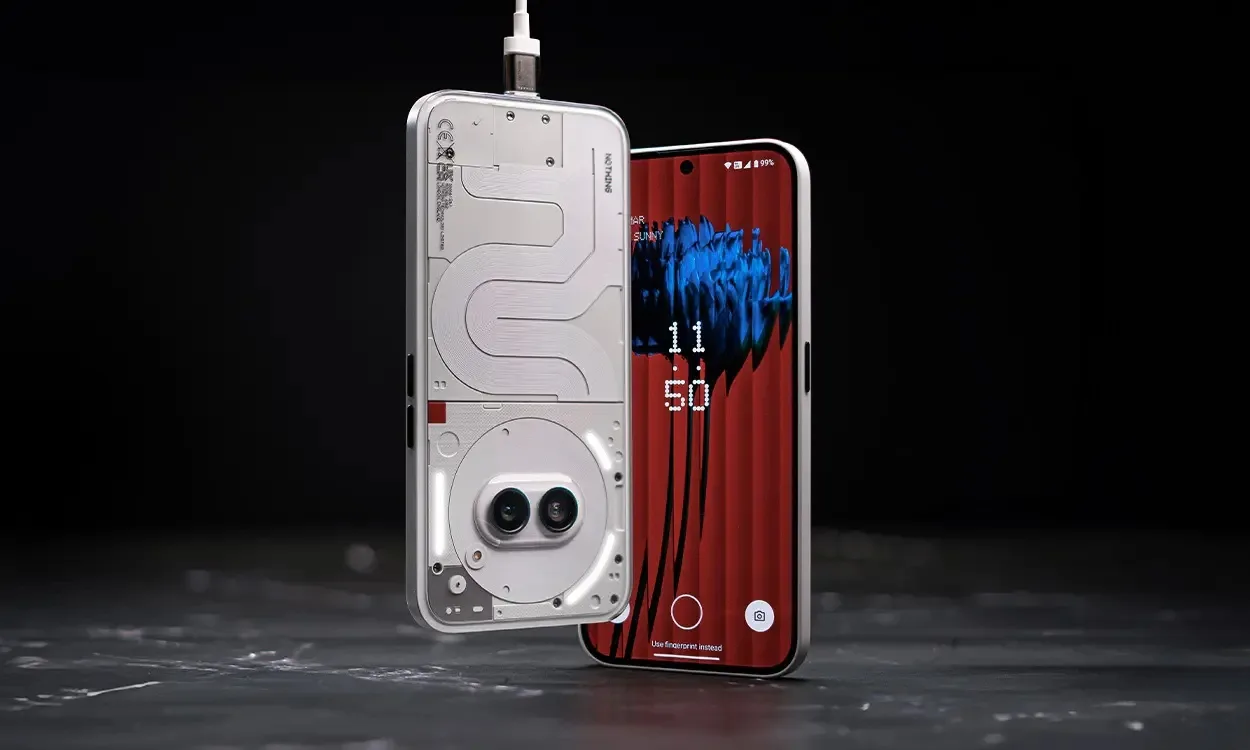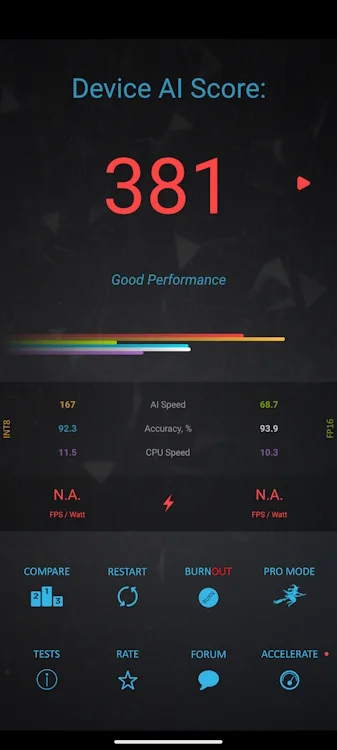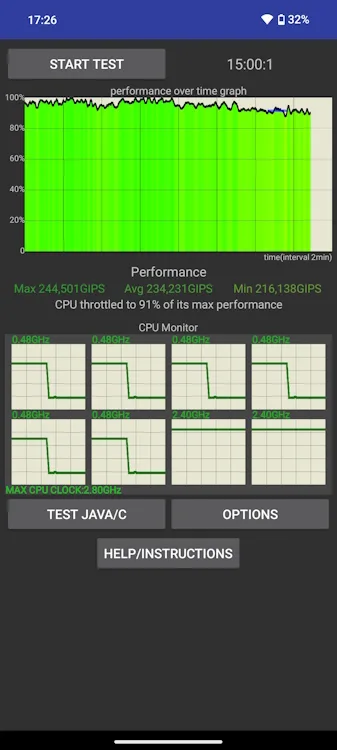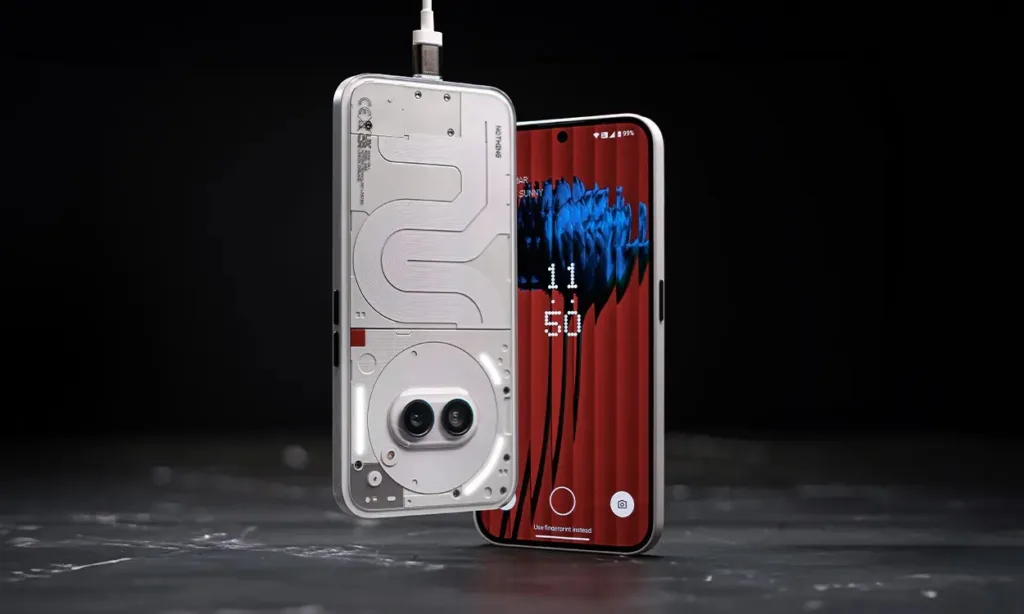
When the Nothing Phone (1) debuted in 2022 with its distinctive glyph lights and transparent design, it created a stir in the market. However, the Nothing Phone (2), which launched a year later, didn’t have the same impact. Now, the Nothing Phone (2a) has arrived, and it looks like this phone could be the next big thing in the sub-Rs 25,000 price segment, akin to the POCO F1.
That’s quite a statement, isn’t it? As soon as the device arrived at the AzMo Tech office, I eagerly seized the opportunity to test it out. Join me as I delve into this comprehensive review of the Nothing Phone (2a), pushing its limits to determine its place in the market. Let’s get started!
Nothing Phone 2a: Build and Design

I’ve been using the Black variant of the Nothing Phone 2a. We also received the White variant later on. If I were you, I’d opt for the White color option as it looks much better in person, especially with the ivory pieces at the back. Not to mention that all the transparent sorcery comes to life a lot more.
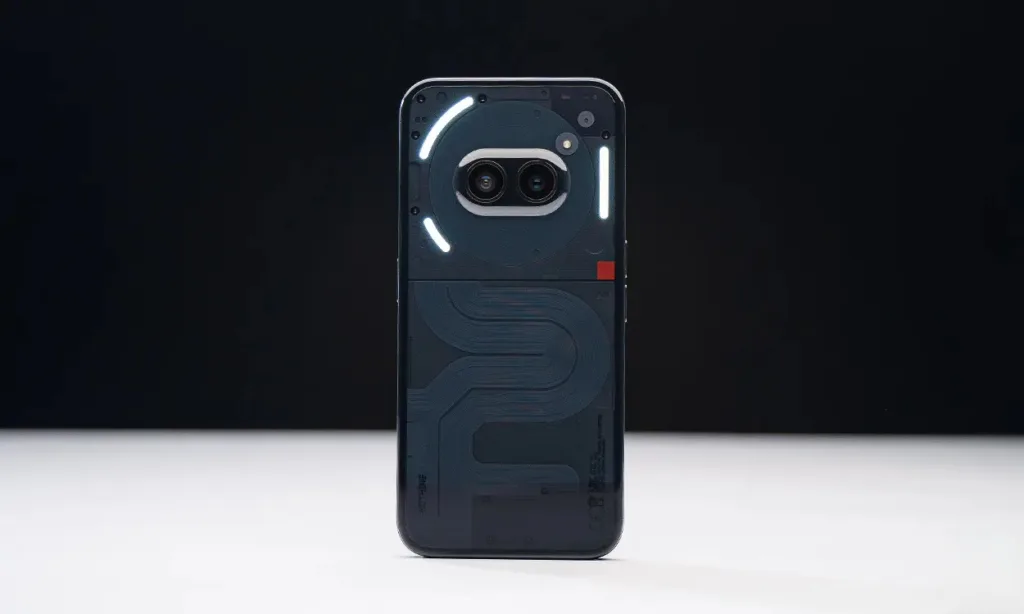
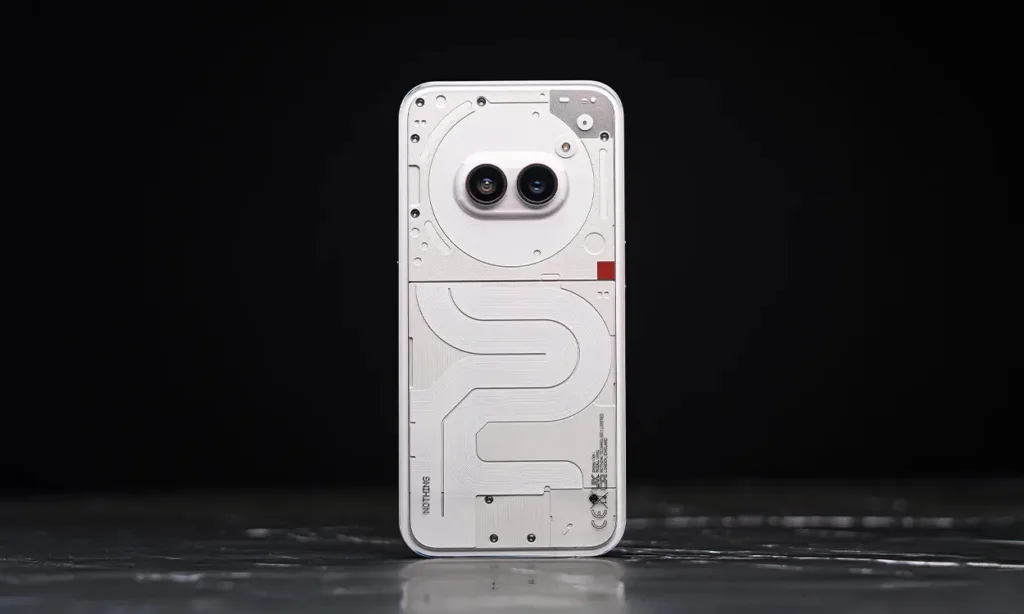
With that said, I won’t dwell much on the Nothing Phone 2a box contents, as it was a rather underwhelming unboxing experience. In addition to the handset, you’ll find a SIM ejector tool, a double-ended Type-C cable, and two leaflets you’ll likely never read. There’s no charger or case included in the box.
The Nothing Phone 2a does not include a charger or case inside the box.
However, when I picked up the Nothing Phone 2a, I was instantly impressed. The matte finish on the Phone 2a’s plastic frame feels really good in hand. I had an instant sense of assurance that “I wouldn’t be dropping it easily“. When I shared this feeling with one of our in-house researchers who was also testing out the Phone 2a, he vigorously agreed.
He has super clammy hands, which make the devices he uses very prone to slipping. He currently uses the Nothing Phone (1) as his primary device and told me how the matte finish on the sides of the Phone 2a felt grippier and better than Nothing’s first phone. However, it’s worth noting that for some reason, the White variant of the phone does not offer this strong grip at the sides.
The back of the Nothing Phone 2a is what truly makes it stand out in a market where most phones look similar. It’s not only due to Nothing’s trademark Glyph Interface or transparent rear panel, but also because of the careful consideration put into crafting this device.

Unlike the Nothing Phone 1’s five and Phone 2’s eleven strips, the Phone 2a comes with just three Glyph strips at the back. However, it keeps the Phone 2’s progress bar indicator strip, which functions with specific apps such as Uber, Zomato, and more.
One of the three Glyph strips on the Nothing Phone 2a acts as a progress bar for apps.
The Nothing Phone 2a improves on its predecessor, the Phone 1, by introducing the Glyph lighting feature. However, this lighting is limited to the upper portion of the Phone 2a’s back panel and does not include a charging indicator like other phones.
One unique aspect of the Phone 2a is its unconventional camera module design, which sets it apart from Nothing’s Phone 1 and Phone 2.

I’m not particularly fond of large camera modules that lack functionality. A great example of a practical camera module design is seen in the Pixel 8 Pro, which not only elevates the device evenly from the top but also keeps it stable to prevent wobbling. Additionally, the Pixel 8 Pro’s camera module houses a temperature sensor, a feature I tested last year.
The Nothing Phone 2a doesn’t feature any extravagantly useless elements but excels in terms of its camera module design.
Let’s start with the placement of the camera module. When holding the phone in landscape mode, such as when gaming (more on that later), your fingers won’t accidentally brush against the camera sensors and smudge them.
Furthermore, this camera module also enhances the phone’s stability when placed on a flat surface. I have a lazy habit of typing with the phone on my desk instead of holding it up, and I was pleasantly surprised by how stable it remained even as I typed vigorously. So, while the camera module’s appearance may remind you of Peppa Pig’s nose (try unseeing that), it actually provides some practical utility.
The camera module on the Nothing Phone 2a effectively prevents wobbling and remains out of reach of your fingers when holding the device in landscape mode.
Additionally, the back panel is made of glass-imitating polycarbonate, unlike the glass backs of the brand’s other two phones. Despite this, after carrying the phone in my bag multiple times without a case and it colliding with keys and other items, I didn’t notice any major scratches. There were some minor scratches, but they weren’t as noticeable.
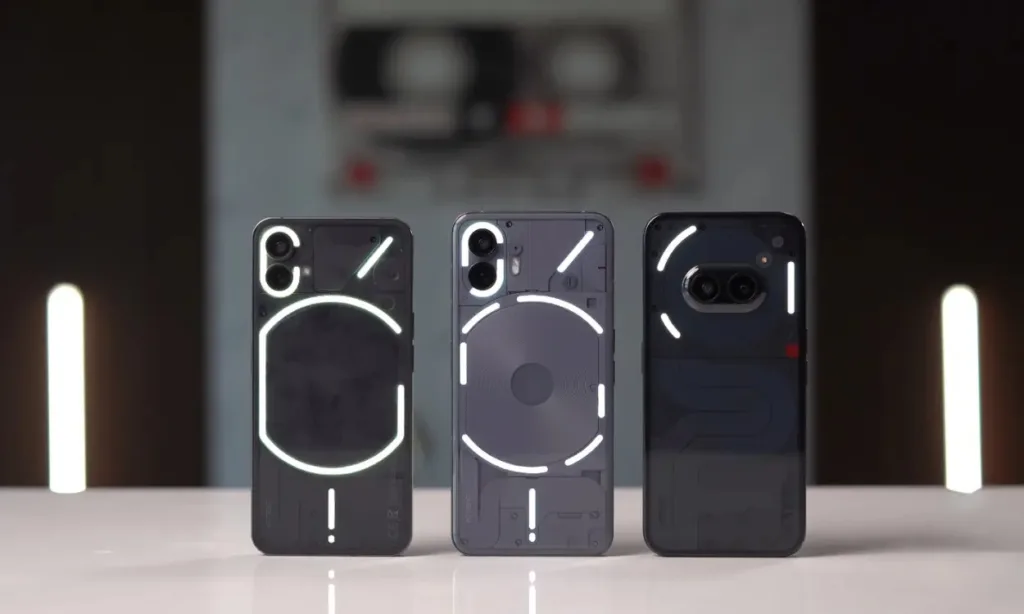
However, I still recommend using a high-quality case. Specifically, one with camera bumps which protect the camera module. Since the camera module is also made of plastic and the phone rests on it for the most part, it won’t take long for the camera module and sensors to get scratched. It’s advisable not to take any chance.
Weighing in at 190 grams, the Nothing Phone 2a is remarkably lightweight. Its weight distribution makes it more comfortable to hold than even some slightly lighter phones in the budget segment.
The phone’s buttons are made of aluminum, which is uncommon in both the budget and higher price brackets. Compared to phones like the OnePlus 11R, POCO X6, and Moto Edge 40 Neo, which have plastic buttons that tend to rattle, the metal buttons on the Phone 2a feel much more solid and durable.
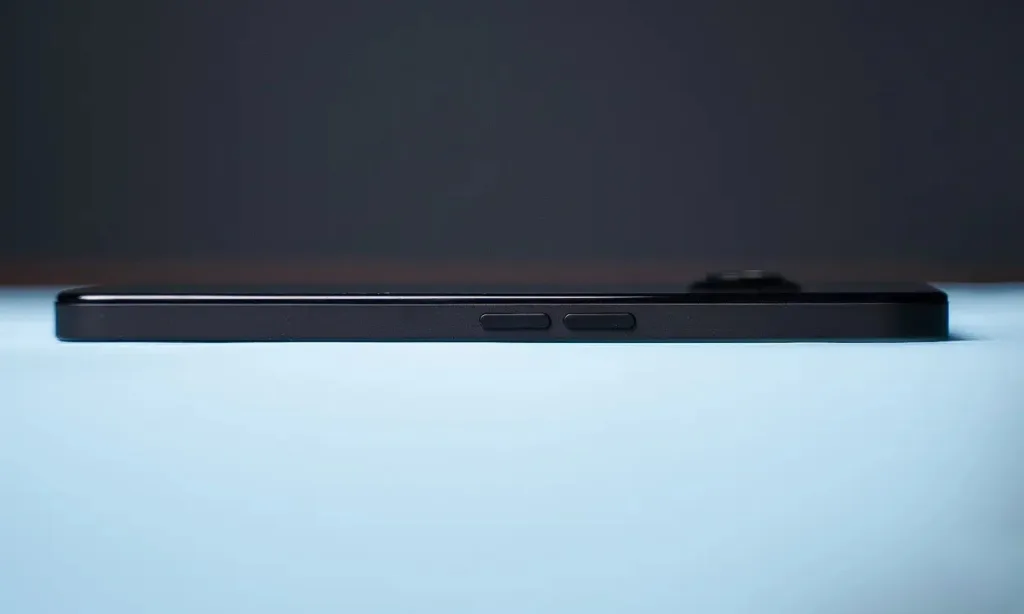
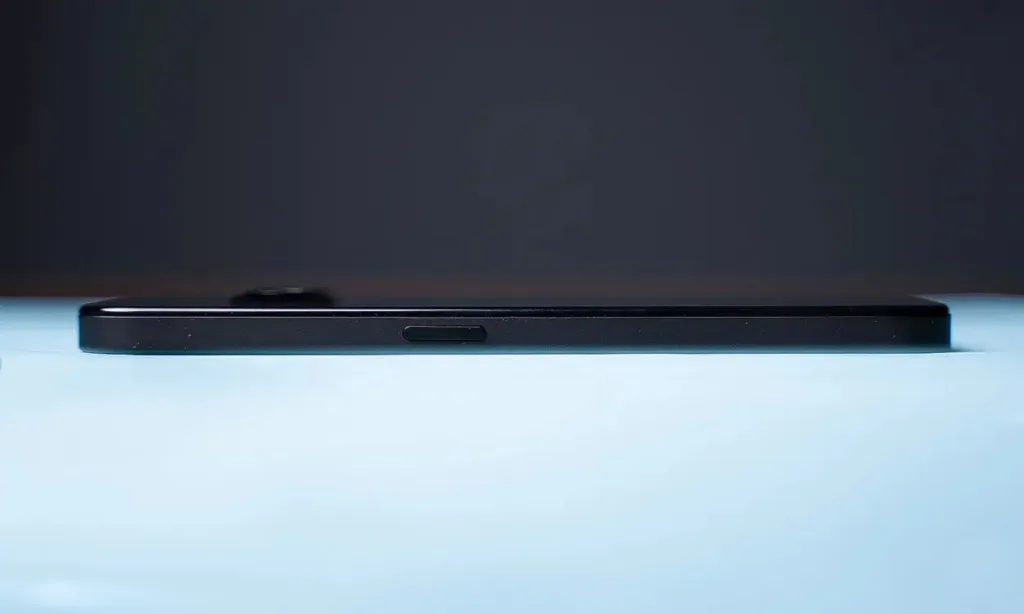
I particularly appreciate the button placement on the Nothing Phone 2a. The power button is located on the right side of the frame, while the volume rockers are on the left. This arrangement makes it easy for me to take one-handed screenshots and power off/restart the phone, instead of struggling to press buttons all on one side.
The power button and volume rockers on the Nothing Phone 2a are made of aluminum, giving them a solid and durable feel.
Unlike its predecessor, the Nothing Phone 2a has been designed to prevent dust from accumulating inside the transparent back. Nothing has acknowledged this issue and assured users that the Phone 2a’s design construction will prevent such buildup.
Nothing Phone 2a: Display

After appreciating the phone’s design, I turned my attention to its display. I’ve always appreciated symmetry, and the symmetrical bezels on Nothing phones really resonate with me.
The Nothing Phone 2a continues this trend, boasting a spacious 6.7-inch Full-HD+ (1084 x 2412 pixels) AMOLED display with symmetrical bezels. This display also boasts a fast 120Hz refresh rate, which is adaptive and can automatically adjust down to 30Hz.
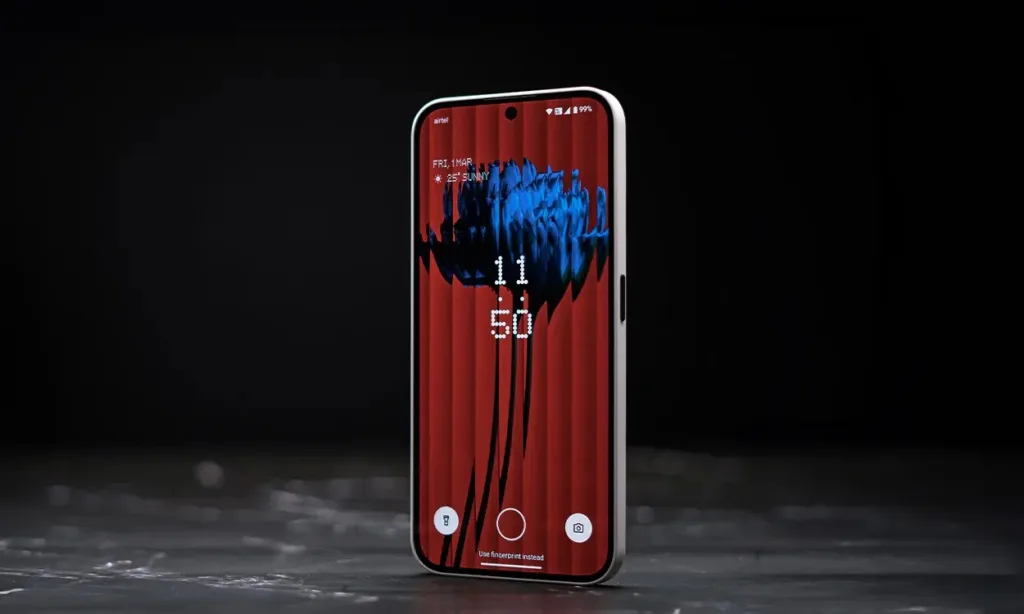
Nothing claims a peak brightness of 1300 nits for the Phone 2a. However, when compared side-by-side with the Moto Edge 40 Neo, which also boasts 1300 nits brightness, the Phone 2a felt more comfortable to view outdoors and less blinding indoors. Something didn’t seem right.
To verify the claim, I used the Lux Meter at the AzMo Tech office and was surprised to find that the Nothing Phone 2a actually reached a peak brightness of over 1,700 nits.
This peak brightness is achieved when you enable the HDR video option in the display settings. The settings also allow you to switch between the Alive and Standard color tone modes and adjust the color temperature to your liking. However, the display does not support DCI-P3 coverage, giving the Moto Edge 40 Neo a slight advantage in producing slightly richer colors.
Despite Nothing’s claim that the Phone 2a can reach a peak brightness of 1300 nits, my testing revealed it surpasses 1700 nits.
The larger display of the Nothing Phone 2a, combined with its impressive brightness levels, made watching HDR videos on YouTube a delightful experience. I also enjoyed watching The Batman on Netflix, particularly admiring the deep black levels during the darker scenes. Additionally, binge-watching Demon Slayer on this phone was a treat, especially with its vibrant and captivating fight scenes.
Furthermore, the 2160 Hz PWM frequency ensures that those sensitive to OLED display flicker at lower brightness levels will find it easy on their eyes. Overall, the display of the Nothing Phone 2a is excellent, bright, and suitable for both indoor and outdoor use.
Nothing Phone 2a: Software Experience

There aren’t many mid-range smartphones in the market that are free from bloatware. While the Moto Edge 40 Neo is one such option, it has its own UI optimization issues, as I’ve highlighted in my comparison between the two phones.

Additionally, the Moto Edge 40 Neo includes a widget that displays ads on the home screen, though it can be removed. The phone also comes with pre-installed apps like LinkedIn and Facebook, which can be uninstalled. In contrast, the Nothing Phone 2a does not feature any pre-installed apps other than essential Google apps.
The Nothing Phone 2a runs on Nothing OS 2.5, based on Android 14, offering a unique software experience in its segment. The UI is exceptionally clean, with seamless animations that elevate the overall premium feel of the phone. Tasks like app opening, multitasking, and navigating between apps are incredibly smooth. Even the transition from Always-On Display to the lock screen is satisfying.
Moreover, the Nothing Phone 2a is supported by 3 years of OS updates and 4 years of security patches. In comparison, the POCO X6 also offers a similar update policy but comes with Android 13 out of the box, limiting it to receive updates up to Android 16.
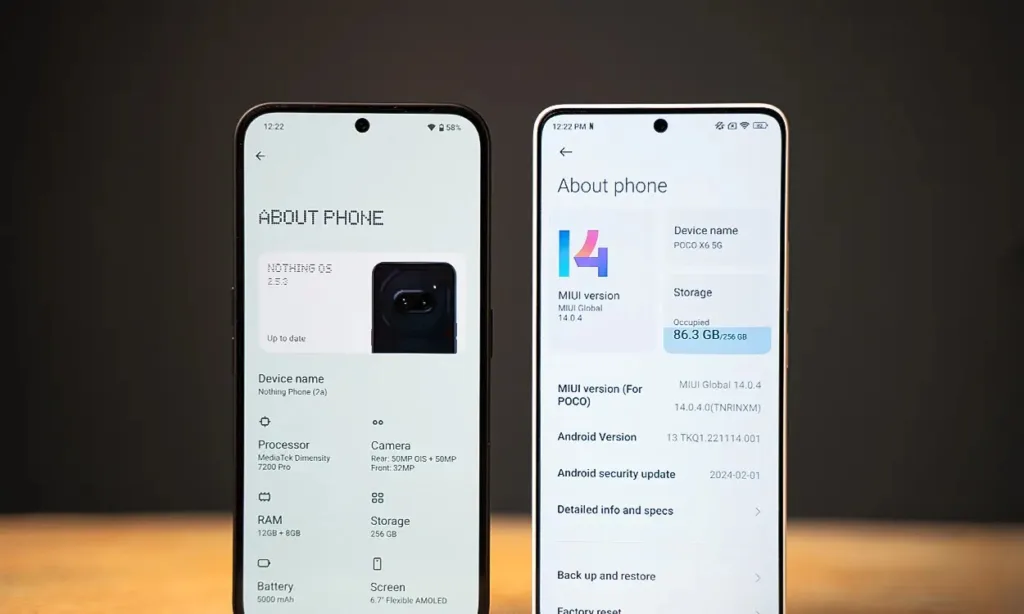
On the other hand, the Moto Edge 40 Neo will only receive 2 years of OS updates, up to Android 15. Since the Phone 2a ships with Android 14, it is set to receive updates up to Android 17, making it a standout choice in terms of software longevity.
Additionally, the Nothing Phone 2a offers full control over the Glyph Interface, a signature feature of Nothing phones. This allows you to set Glyph timers and create custom ringtones using the Glyph Composer app, just like on other Nothing devices.
The Phone 2a comes with Nothing OS 2.5 based on Android 14 out of the box, ensuring a bloatware-free experience and promising 3 years of OS updates, up to Android 17.
A notable feature of Nothing OS 2.5 is the dedicated Music Visualization setting, accessible via a dedicated button. Unlike the Phone 1 and Phone 2 where this feature was only available as an easter egg, it’s now easily accessible. While it’s a fun feature to use, you might prefer to keep the Glyph lighting turned off for most of the time.
It’s worth noting that Nothing has included exclusive AI generative wallpapers on the Phone 2a, a feature typically found on higher-end devices like the Galaxy S24 and Pixel 8 series. While the functionality may be more limited on the Phone 2a, it’s still a nice additional perk to have. Overall, the software experience on the Nothing Phone 2a is unmatched in its budget segment.
Nothing Phone 2a: Performance

Let’s talk about the performance of the Nothing Phone 2a. Powered by the custom MediaTek Dimensity 7200 Pro processor, this phone is built on TSMC’s 4nm architecture. It comes equipped with up to 8GB of LPDDR4X RAM and up to 256GB of UFS 2.2 internal storage.
After using the device extensively for nearly a week, I’ve thoroughly tested its capabilities. From running benchmarks to gaming and handling day-to-day tasks, I’ve pushed the phone to its limits. Here’s what I found:
Day-to-day Usage
As previously mentioned, the Nothing OS 2.5 provides an exceptional software experience, ensuring smooth day-to-day usage without any hiccups. Even with 20-25 apps running in the background, I experienced no stutters or lags. Transitioning between apps was seamless, thanks to the well-optimized Nothing OS.
RAM management is also impressive, with most apps able to resume from where I left off. Using the Nothing Phone 2a as my daily driver has been a satisfying experience, unmatched by other budget phones. I encountered very few bugs during my usage.
There was a minor issue with Netflix playback, where content was stuck on the loading screen. Additionally, there was an instance where the Glyph lighting failed to turn on. However, both issues were resolved with a simple restart. These issues were likely due to our review units running pre-production software, so regular users shouldn’t encounter them.
With my daily usage experience of the Phone 2a nearly complete, I decided to subject it to some heavy-duty benchmarks.
Benchmark
I conducted several benchmarks, including AnTuTu, Geekbench 6, CPU throttling, and others, to assess the performance of the Nothing Phone 2a. Surprisingly, the results were impressive, which is a departure from Nothing’s usual benchmark performance.
The MediaTek Dimensity 7200 Pro SoC, combined with the optimization of the Nothing Phone 2a, likely contributed to these results. Additionally, the TSMC 4nm architecture proved to be power efficient and stable, evident from the 91% stability it achieved in the CPU Throttling test. The AI Benchmark test also yielded positive results.
Overall, the Dimensity 7200 Pro in the Nothing Phone 2a performed exceptionally well in benchmarks, delivering stable performance throughout.
Gaming
Contrary to previous experiences with Nothing phones, where the chipsets often felt lacking in optimized gaming performance, the Nothing Phone 2a powered by the Dimensity 7200 Pro chipset offers a different story.
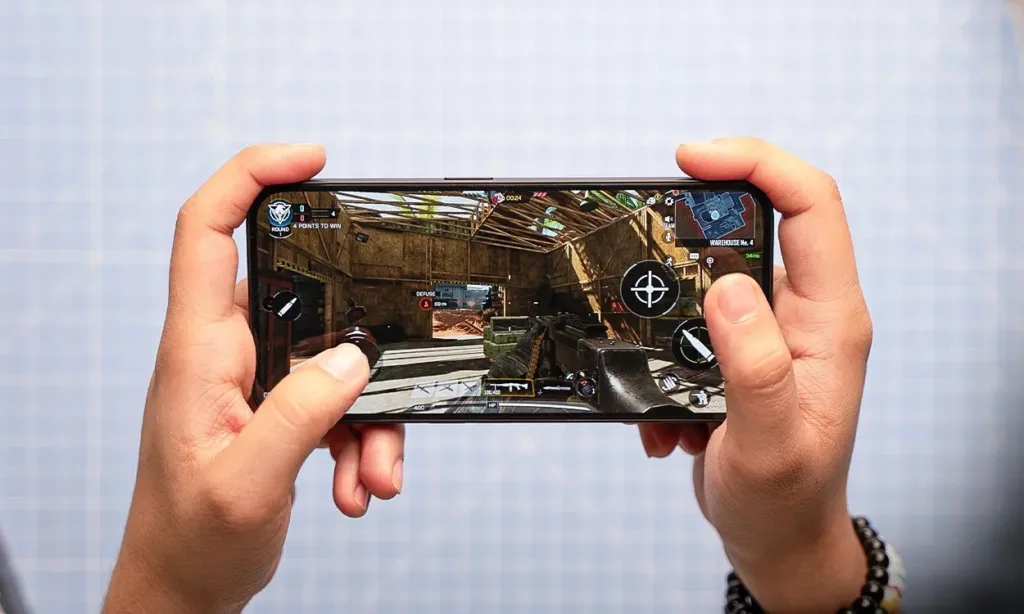
In comparison to competitors like the Moto Edge 40 Neo and POCO X6, which showed some stuttering when running Genshin Impact, the Phone 2a delivered consistent frames without major drops. It also ran CoD Mobile smoothly, without any noticeable issues. BGMI also ran seamlessly on this device. Here are the maximum graphics settings you can expect for these games on the Phone 2a:

Most notably, the phone maintained a comfortable temperature even during extended gaming sessions. Using a thermal gun at the AzMo Tech office, it barely reached 42 degrees Celsius while gaming, which is excellent.
Nothing Phone 2a: Cameras

Now, let’s delve into the camera specifications of the Nothing Phone 2a. It features a dual rear camera system, led by a 50 MP Samsung ISOCELL GN9 sensor as the primary sensor. Accompanying it is a 50 MP Samsung ISOCELL JN1 sensor for ultra-wide-angle shots, boasting a FOV of 114 degrees. On the front, the phone houses a 32 MP Sony IMX 615 sensor for selfies.
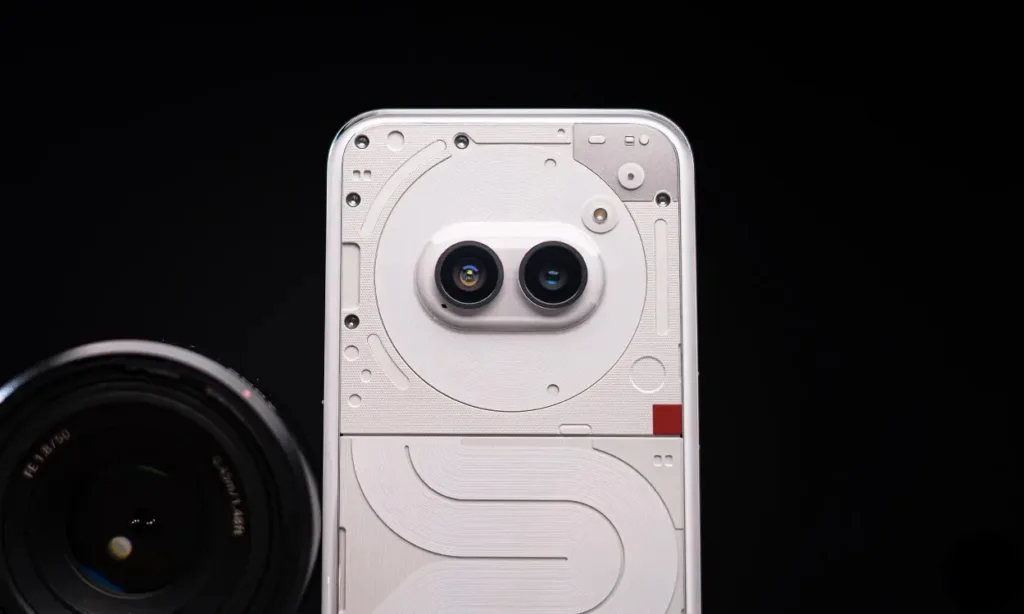
The camera app on the Phone 2a is user-friendly and avoids unnecessary complexity, which I appreciated. Additionally, it supports Ultra HDR for photos, elevating HDR rendering and preserving photo details better than standard JPEG.
I extensively tested the Phone 2a’s camera setup, capturing shots both during the day and at night. Let’s review the outcomes:
Daylight
During daytime photography, the Nothing Phone 2a impressively preserves details without resorting to unnatural enhancements. Colors produced by the primary sensor appear true to life, closely resembling what one would see with their own eyes.
However, the ultra-wide sensor struggles to maintain these natural colors and exhibits some color discrepancies. Despite this, it retains details well, which is a plus.

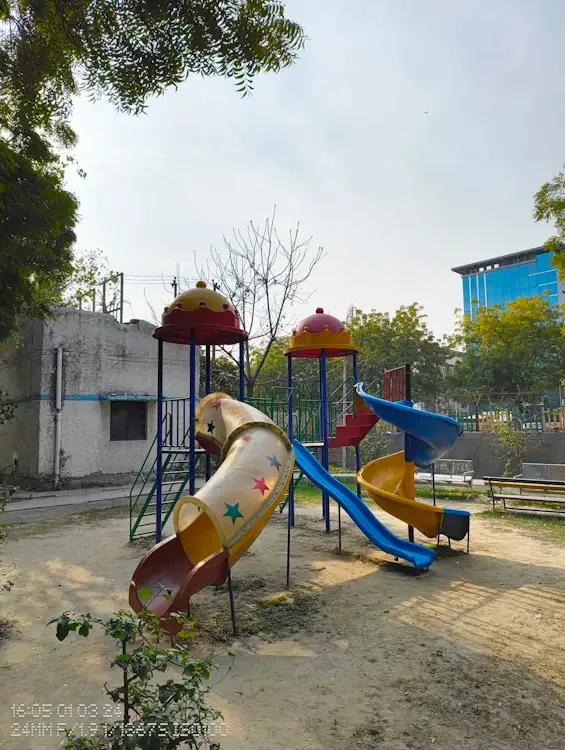
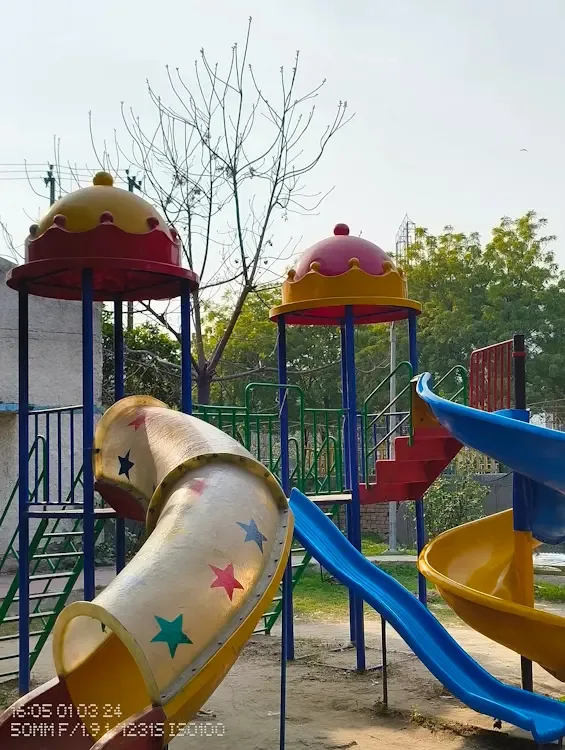
This level of natural color reproduction is uncommon in the budget segment, where many phones tend to over-saturate photos for a more vibrant look. The Phone 2a excels in capturing natural skin tones and details, even in portrait mode, thanks to its great edge detection.


Furthermore, the Phone 2a handles shadows and highlights admirably, resulting in shots with excellent dynamic range. It’s worth noting, though, that the ultra-wide sensor lacks autofocus.
Night Time
Even in low-light conditions, photos captured by the Nothing Phone 2a maintain true-to-life tones and avoid over-enhancing colors, a common practice in budget phones to create a more vibrant look.

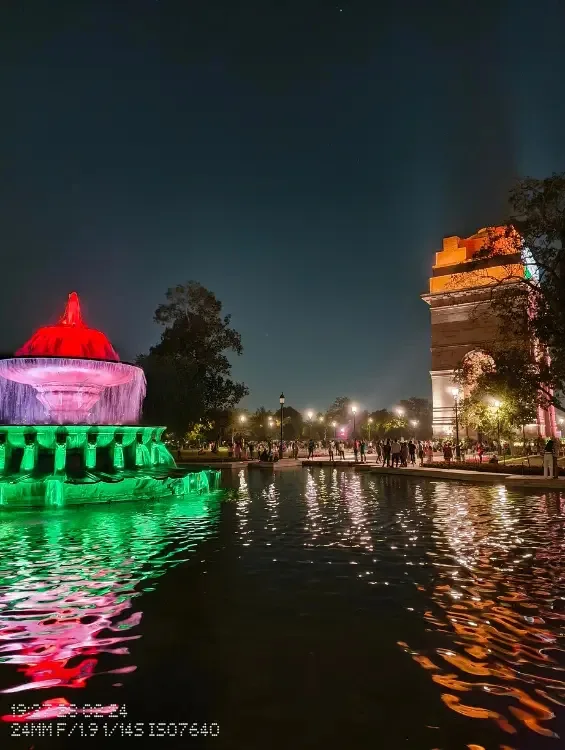

The device effectively manages light sources, preventing them from overpowering the image and causing unpleasant glare, which is a positive aspect.

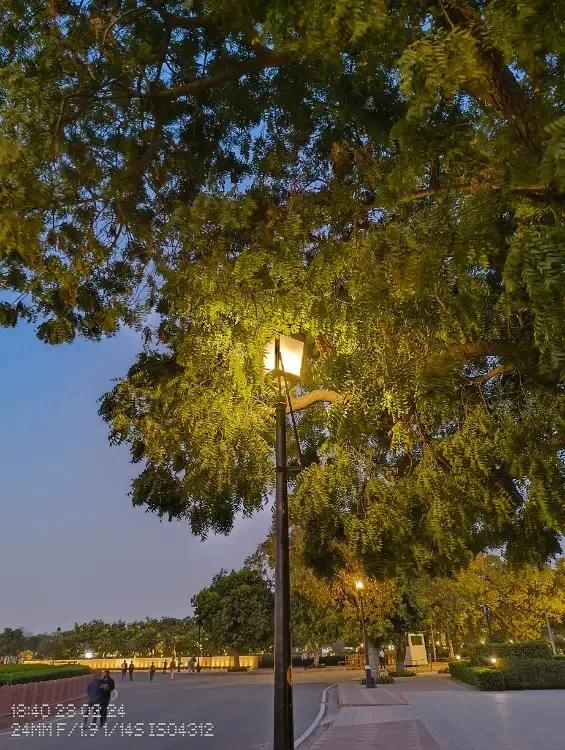



However, it’s worth noting that photos taken with the ultra-wide sensor sometimes exhibited noticeable lens flare. This could be an issue specific to our units or related to the pre-production software. Either way, it’s a point of concern.
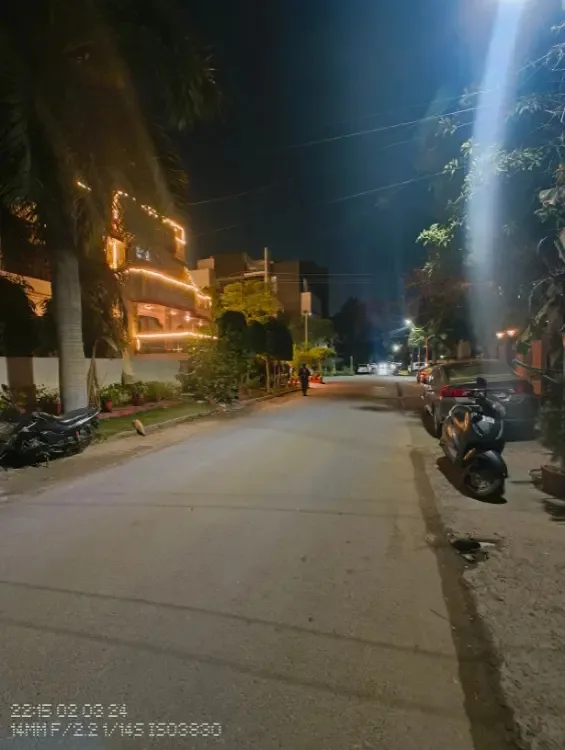

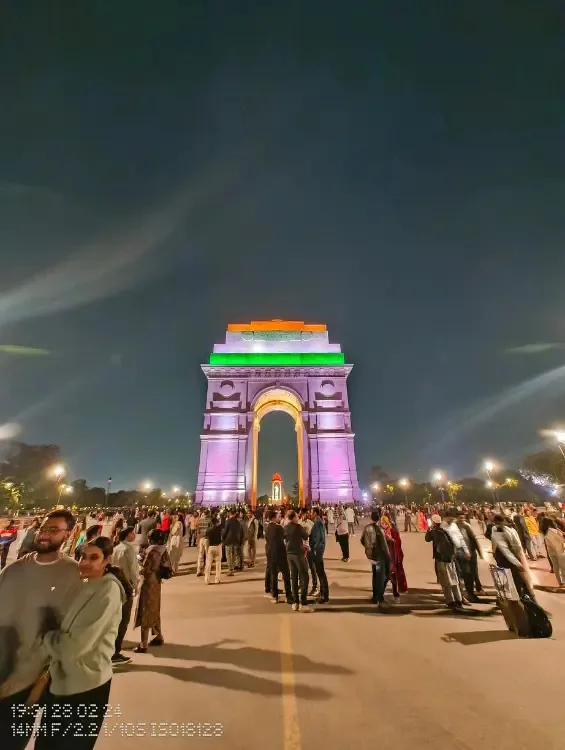
Selfie Shooter
The front camera of the Nothing Phone 2a performs admirably, especially in comparison to other phones I tested. While many phones tend to overprocess images, the Phone 2a avoids this issue, delivering accurate skin tones and good details even upon zooming in.
Portrait shots turn out well, with decent edge detection. However, selfies taken at night exhibit a slight smoothening effect that I’m not particularly fond of. Other than that, the camera handles details quite effectively in low-light conditions.
Videos
The Nothing Phone 2a impresses with its video recording capabilities, offering up to 4K resolution at 30 FPS using its primary rear sensor.
Both the rear and front cameras can record videos in 1080p at 60 FPS, providing smooth and high-quality footage. The video stabilization is excellent, ensuring steady videos without any noticeable focus-hunting issues. Moreover, the microphone quality is commendable, surpassing that of other phones in the same price range.
The Nothing Phone 2a performs well in low-light conditions, maintaining good light levels and stable footage.
It also supports HDR video recording at 1080p and 30 FPS, although the difference in quality compared to regular videos may not be very noticeable.
Nothing Phone 2a: Battery and Charging

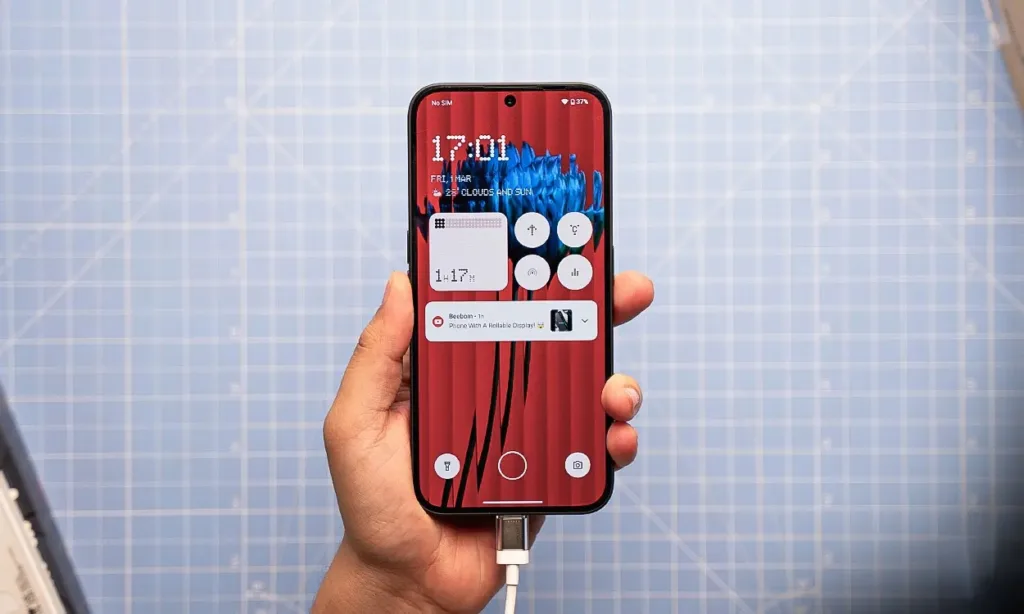

When it comes to the battery, the Nothing Phone 2a is equipped with a 5,000mAh unit, which is supported by up to 45W fast charging. While wireless charging is not included, this is a common omission in budget smartphones.
In real-world usage, the battery life of the Nothing Phone 2a is impressive, providing an average of 7 hours or more of screen-on time.
After 1.5 hours of playing YouTube videos, 2 hours of streaming Netflix content, 1 hour of playing Genshin Impact, 1.5 hours of playing BGMI, and a round of 3DMark stress tests, the Nothing Phone 2a still had 7 hours and 31 minutes of battery life remaining.

In terms of charging speeds, the phone was at 1% when I began charging it at 2:32 AM. By around 3:38 AM, the device was fully charged, taking approximately 1 hour and 10 minutes to reach full charge.
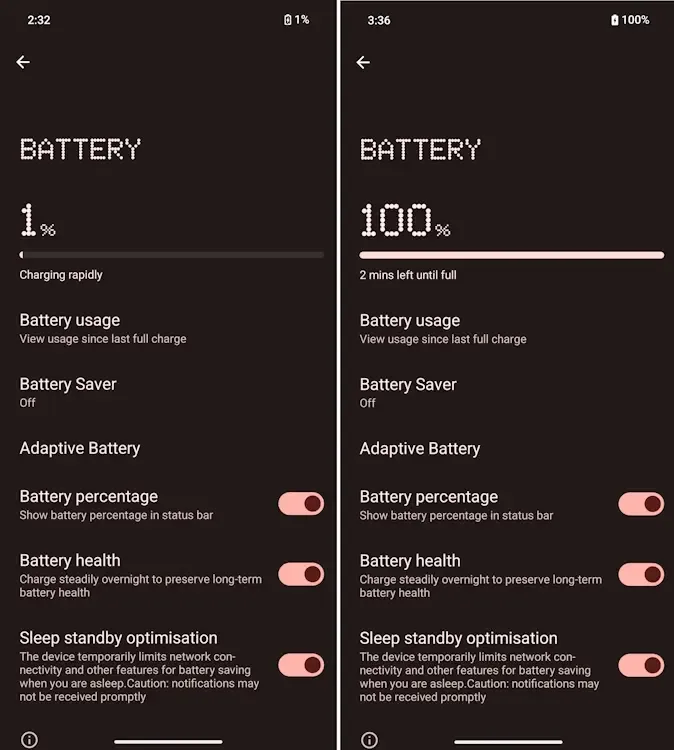
Nothing Phone 2a: Connectivity

In terms of connectivity, the Nothing Phone 2a offers top-notch features without compromising on anything. It is equipped with WiFi 6 and Bluetooth 5.3, along with NFC support. Moreover, the smartphone supports 13 5G bands, ensuring excellent 5G connectivity.
I conducted a 5G speed test and found the 5G connectivity to be stable. Whether using a Jio or Airtel SIM, I consistently experienced strong 5G coverage, with the signal bars remaining full most of the time. Overall, the Nothing Phone 2a excels in connectivity options.

Is the Nothing Phone 2a Worth Buying?
The Rs. 20,000 to Rs. 25,000 price segment has evolved into the new budget category for smartphones. This shift has occurred as brands like Redmi and Realme have pushed their popular Note and Number series beyond the Rs. 20,000 price point.

With numerous smartphones launching in this price range, it’s rare to find a device that truly redefines the category. Typically, it’s the premium flagship phones that offer standout features. However, the Nothing Phone 2a changes this narrative.
The Nothing Phone (2a) is poised to make competitors like Realme, Redmi, OnePlus, and others take notice.
With its well-considered design and a clean software experience, the Nothing Phone 2a embodies the qualities expected from a nearly perfect smartphone.
I’m calling it near-perfect because there are a couple of things that could have made it a complete smartphone. Firstly, and most importantly, the brand should have included a charger in the box. In a crowded market where competitors are offering not only a charger but also a high-quality case in the box, it seems like the logical choice.
Adding a charger in the box would have significantly increased the value of the Nothing Phone (2a), especially considering that Nothing’s own 45W charger is priced at Rs. 2,499. While there are cheaper alternatives available, users would still need to spend extra money. Additionally, since the phone does not come with a case, users would also need to purchase one separately. This can be disappointing for those looking to buy a sub-Rs 25,000 phone, as they are often on a strict budget and do not want to compromise on essential accessories.
Furthermore, the build quality of the Nothing Phone 2a is a point where some cost-cutting is evident. In a market where many phones feature glass or vegan leather backs, the plastic back of the Nothing Phone 2a stands out as a less premium option.
It’s unclear how much effort or cost is involved for Nothing to incorporate Glyph lights into its devices. While the Glyph lighting has become a distinctive feature of the brand, when it comes to creating a budget-focused phone like the Phone 2a, one might question whether it could have been omitted.
Instead of Glyph lights, it might have been a better choice to provide the device with a metal construction or glass back. However, it’s worth considering whether such features would have been feasible within the budget constraints of the Phone 2a. It’s possible that Nothing is already exploring alternative design ideas for its future offerings. Regardless, these design decisions do play a role in how the Phone 2a compares to its competitors.
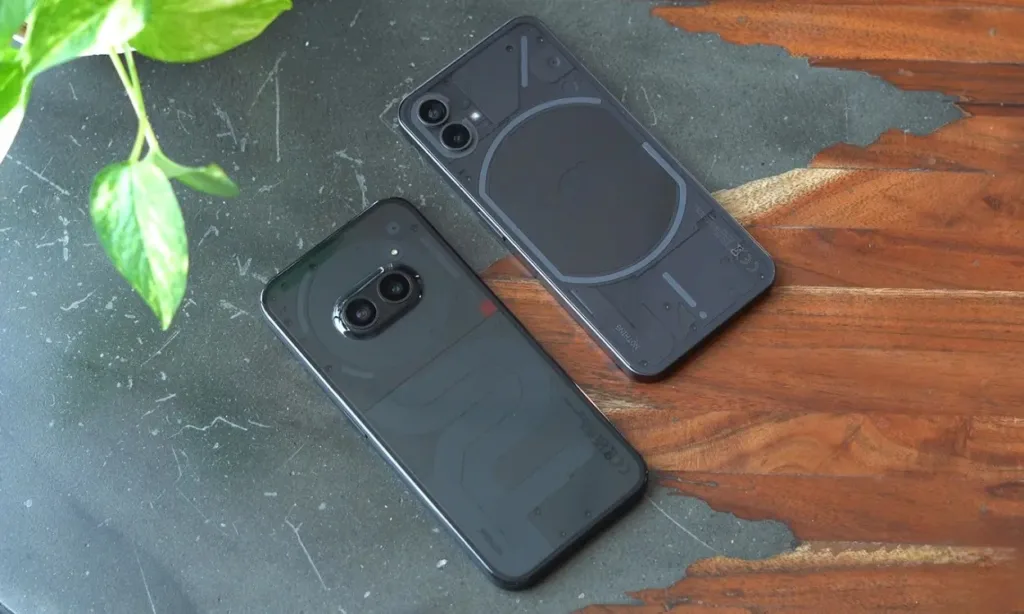
Another factor to consider is Nothing’s service center availability. While there are several multi-brand authorized service centers, Nothing has recently opened its first exclusive service center in Bangalore. This limited service center network could potentially impact the repair and service experience for Nothing Phone 2a users.
Overall, I can confidently say that I haven’t used a phone with such remarkable software performance and fluidity in this price range in quite some time. The combination of design choices, vibrant display, excellent speakers, exceptional cameras, and impressive battery life makes the Nothing Phone 2a truly stand out.
Unless something equally impressive comes along, I’m comfortable calling the Nothing Phone 2a my favorite budget smartphone at the moment. Priced at Rs. 23,999 for the base model with 8GB of RAM and 128GB of storage, the Nothing Phone 2a has set a high standard that will be challenging for any budget phone to exceed, at least for the time being.
What about you? Are you considering purchasing the Nothing Phone 2a? If not, which smartphone are you interested in, and why? Share your thoughts in the comments below!
Pros and Cons
The Pros
- Good, bright display with symmetrical bezels
- Distinctive and functional design featuring glyph lights
- Dependable performance with the Dimensity 7200 Pro
- Camera performs well for a mid-ranger
- Solid thermal management
The Cons
- Polycarbonate build
- No charger or case in the box
Final Verdict
Design and Build
Display
Software Experience
Performance
Cameras
Battery and Charging
Connectivity
